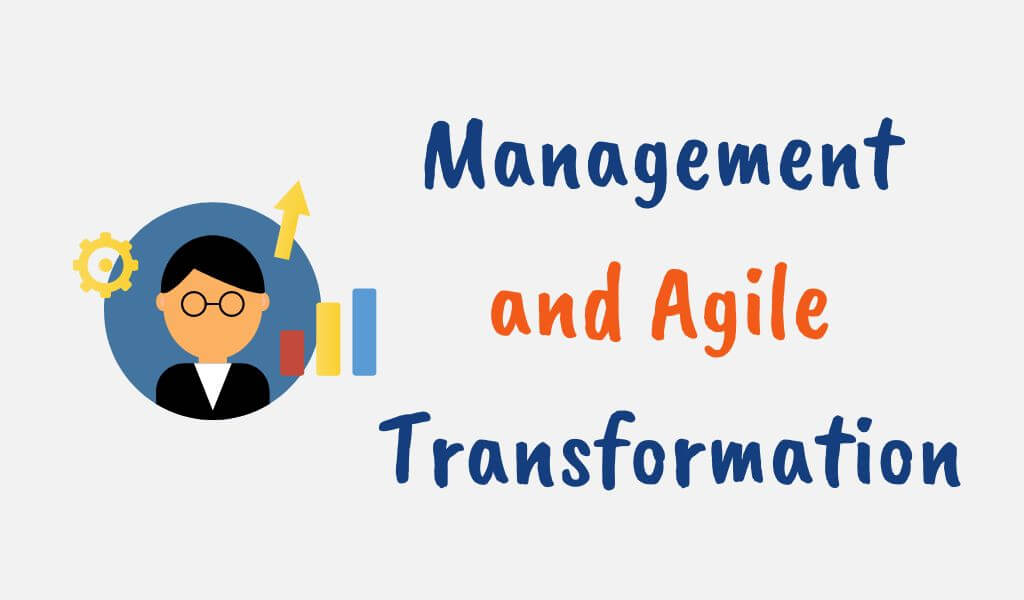Over the years and especially in recent times, Agile has become a popular approach to software development and project management because of its high flexibility, efficiency, and responsiveness to change.
Naturally, a lot of people are trying as best as possible to jump on the bandwagon and implement Agile rather than the traditional waterfall project management approach.
However, this Agile transformation can be challenging, especially for large organizations with complex processes and hierarchies. But the benefits of Agile are too tempting to pass up.
So, what must management do for a successful Agile transformation, especially for these large organizations? This blog post gives you a ten-step approach to implementing Agile for teams and organizations.
One thing you need to understand is Agile transformation isn’t a one-time event, but a continuous process of learning and improvement.
Organizations that successfully transform to Agile can enjoy benefits such as increased efficiency, faster time to market, and improved customer satisfaction.
It however requires a significant investment of time, effort, and resources, and requires a commitment to ongoing improvement and innovation.
What is Agile Transformation?
Agile transformation is the process of transitioning fully to an Agile approach in an organization. This transition is to cut across every employee and department and not just development teams.
As noted by the management consulting firm Mckinsey and Company, for a comprehensive Agile transformation within an organization, it has to touch the 4 facets of the organization which are people, processes, structure, and technology.
The goal of Agile transformation is to enable organizations to be more responsive to change, deliver value to customers more efficiently, and achieve business objectives more effectively.
Agile transformation involves a significant shift in mindset, culture, and practices, and requires the participation and commitment of all stakeholders, including management, teams, and customers.

What Must Management Do for a Successful Agile Transformation?
If you are trying to implement Agile in an organization that’s new to it, I assure from experience you that it’s not a task that I envy.
It’s entirely possible though and worthwhile but requires time, conscious efforts, and calculated steps. For successful Agile transformation by the management of an organization, these ten steps are key:
1. Define Your Agile Strategy
The first step in any Agile transformation is to define your strategy by identifying the goals you want to achieve, the teams and stakeholders involved, and the metrics you’ll use to measure success.
Your strategy should align with your overall business objectives and be communicated to all stakeholders.
2. Train Your Team
Agile requires a different mindset and approach than traditional project management. Therefore, it’s essential to train your team on the principles of Agile, as well as its practices and tools.
This training should be comprehensive and ongoing to ensure everyone understands the new way of working and can contribute effectively.
3. Empower Your Teams
In Agile, teams are self-organizing and responsible for planning, executing, and delivering their work.
To enable this, management must empower their teams to make decisions, collaborate, and continuously improve by breeding a culture of trust, transparency, and open communication.
4. Create a Safe Environment for Experimentation
Agile is an iterative and incremental approach, which means that teams must experiment, learn, and adapt continuously.
To enable this, management must create a safe adaptive environment where teams can take risks, make mistakes, and learn from their failures by encouraging experimentation, innovation, and continuous learning.
5. Measure Your Success
Agile is a results-driven approach, which means that success is measured by the value delivered to the customer.
To measure success, management must establish metrics that align with their business objectives and track progress continuously by using a data-driven approach, where decisions are based on evidence and feedback from customers and stakeholders.
6. Foster a Continuous Improvement Mindset
Agile is not a one-time event but a continuous process of learning and improvement. Therefore, management must foster a culture of continuous improvement.
Teams should be encouraged to reflect on their work, identify areas for improvement, and implement changes with a mindset of openness, curiosity, and a willingness to experiment and learn.
7. Align Your Organizational Structure
Agile requires a flatter, more decentralized organizational structure than traditional hierarchies.
The organization’s management must align its organizational structure with agile principles, such as self-organization, cross-functional teams, and continuous delivery.
This may require reorganizing teams, changing reporting lines, and modifying job roles and responsibilities.
8. Encourage Collaboration and Communication
Agile emphasizes collaboration and communication between teams and stakeholders.
A transformation to Agile requires encouragement and facilitation of communication and collaboration across the organization.
This requires tools and processes that enable remote and distributed teams to work effectively, such as video conferencing, instant messaging, and collaborative workspaces.
9. Align Your IT Infrastructure and Processes
Agile requires a flexible, scalable, and automated IT infrastructure and processes that can support continuous delivery and integration.
Therefore, management must align their IT infrastructure and processes with Agile principles, such as DevOps, continuous testing, and automation by investing in new tools and technologies and adopting new processes and practices.
10. Embrace Agile Values and Principles
Finally, for a successful Agile transformation, management must embrace Agile values and principles by adopting a mindset of agility, embracing change, and focusing on delivering value to the customer.
It also means aligning their actions with Agile values, such as collaboration, transparency, and continuous improvement, and modeling these values for their teams and stakeholders
Agile Transformation Metrics for Executives: How to Measure Agile Transformation
Agile transformation is a continuous process of learning, improvement, and adaptation.
Therefore, measuring the success of an agile transformation requires a data-driven approach that tracks progress, identifies areas for improvement, and aligns with business objectives.
To measure Agile transformation, it’s important to establish a baseline for each metric, set targets for improvement, and track progress regularly.
Here are some key metrics for measuring Agile transformation:
1. Business Value
One of the primary objectives of Agile is value delivery to your customers.
Measuring the value delivered by your products or services can be a good indicator of the success of your transformation.
Some common metrics to measure business value include customer satisfaction, revenue growth, and market share.
2. Delivery Speed
Agile emphasizes fast, iterative delivery of products or services and the speed of your delivery can help you determine if you’re making progress in your transformation.
Some common metrics to measure delivery speed include lead time, cycle time, and throughput.
3. Quality
Agile places a strong emphasis on delivering high-quality products or services that meet customer needs.
Measuring the quality of your products or services can help you determine if your transformation is on track.
Some common metrics to measure quality include defect density, customer complaints, and user satisfaction.
4. Employee Engagement
Employee engagement is a critical factor in the success of any Agile transformation. Engaged employees are more likely to embrace agile principles, collaborate effectively, and take ownership of their work.
Measuring employee engagement can help you determine if your transformation is having a positive impact on your team.
Some common metrics to measure employee engagement include employee satisfaction, retention rates, and feedback from employee surveys.
5. Customer Satisfaction
Measuring customer satisfaction is crucial in evaluating Agile transformation success. It helps identify areas for improvement, increase customer loyalty, and drive business growth.
This can be done through surveys, feedback forms, and social media analytics to ensure delivering customer-centric products and services.
6. Cultural Shift
Agile requires a cultural shift towards collaboration, experimentation, and continuous improvement.
Measuring the degree to which your organization has embraced this cultural shift can help you determine if your transformation is successful.
Some common metrics to measure cultural shift include the frequency of collaboration across teams and departments, the number of experiments and innovations implemented, and the degree to which teams reflect on and learn from their work.
Benefits of Agile Transformation
There are lots of benefits that an Agile transformation can bring to an organization. These include:
1. Faster Time-to-Market
Agile methodologies prioritize delivering working products or services quickly and efficiently, allowing organizations to respond to market changes and customer needs more rapidly.
2. Improved Customer Satisfaction
Agile teams focus on delivering products or services that meet customer needs and expectations.
By continuously seeking feedback and making improvements, organizations can improve customer satisfaction and loyalty.
3. Increased Productivity
Agile methodologies emphasize collaboration, communication, and continuous improvement, which can lead to higher productivity and efficiency.
4. Better Quality
By focusing on quality throughout the development process, Agile teams can catch and fix issues earlier, leading to higher-quality products or services.
5. More Engaged Employees
Agile methodologies encourage teams to take ownership of their work and collaborate effectively. This can lead to higher employee engagement and satisfaction.
6. Improved Financial Performance
By delivering products or services faster, improving customer satisfaction, and increasing productivity, organizations can improve their financial performance and competitiveness.
Challenges to Agile Transformation
While Agile transformation can bring many benefits, it’s not without its challenges.
Here are some common challenges that organizations may face when undergoing an Agile transformation:
1. Resistance to Change
One of the biggest challenges to Agile transformation is resistance to change. Some employees may be hesitant to adopt new practices or may feel like they are being forced to differently way.
To overcome this challenge, it’s important to involve employees in the transformation process and provide them with training and support to help them adjust to new ways of working.
2. Lack of Executive Support
Another common challenge to Agile transformation is a lack of executive support. Without support from top-level leadership, it can be difficult to implement changes across the organization.
To overcome this challenge, it’s important to communicate the benefits of Agile transformation to executives and involve them in the process.
3. Siloed Teams
Agile requires cross-functional collaboration and communication. However, siloed teams or departments can hinder this collaboration.
To overcome this challenge, it’s important to break down silos and encourage communication and collaboration across teams and departments.
4. Lack of Agile Expertise
Implementing Agile practices requires expertise and experience. Without this expertise, it can be difficult to implement Agile transformation successfully.
To overcome this challenge, organizations can hire Agile coaches or trainers, or invest in training and development programs for employees.
5. Overreliance on Tools
Agile practices emphasize people and interactions over processes and tools. However, some organizations may over-rely on tools or software to implement Agile practices.
To overcome this challenge, it’s important to focus on people and interactions first and use tools to support the Agile process, not replace it.
Conclusion
In a nutshell, Agile transformation is a continuous learning and improvement process, and commitment to this process is essential for long-term success.
To achieve a successful Agile transformation in an organization, the management must define a clear strategy, train their team, empower them, measure their success, and embrace Agile values and principles.
By doing this, they can increase efficiency, responsiveness, and value delivery to their customers.
FAQs
What is an Example of Agile Transformation?
An example of Agile Transformation is Spotify, which transformed its development process using Agile methodologies to improve its product delivery and increase customer satisfaction.
What is the Difference Between Agile and Agile Transformation?
Agile refers to an iterative approach to project management and software development that emphasizes flexibility, collaboration, and customer satisfaction.
Agile transformation, on the other hand, refers to the process of implementing Agile principles and practices across an entire organization.





